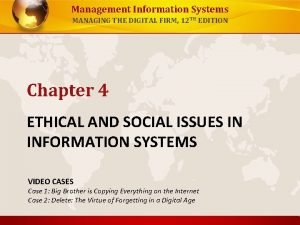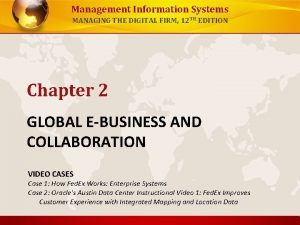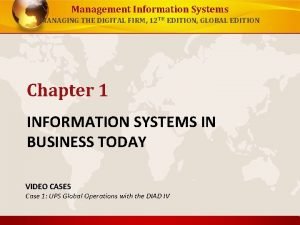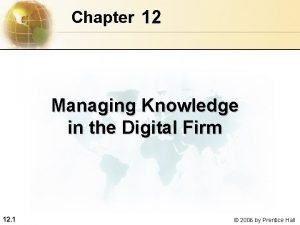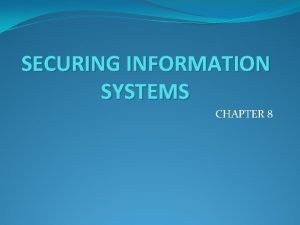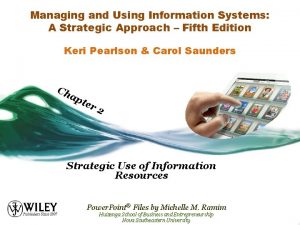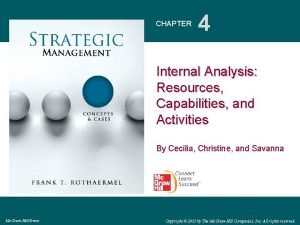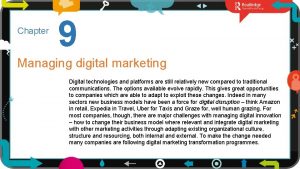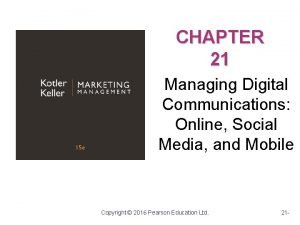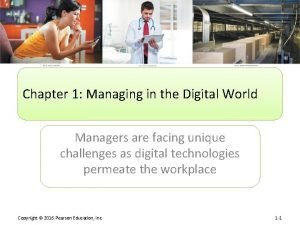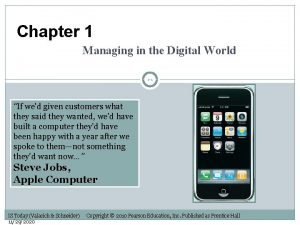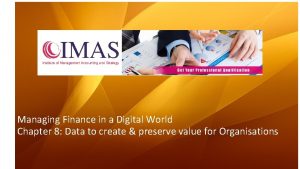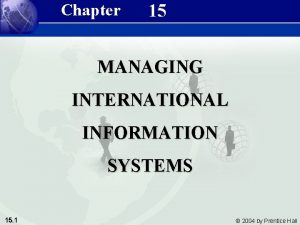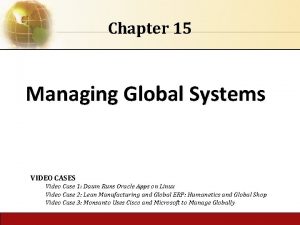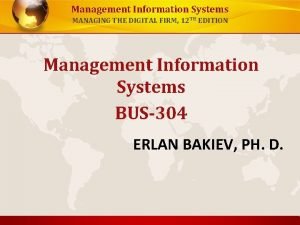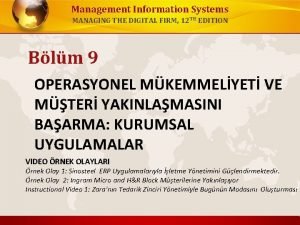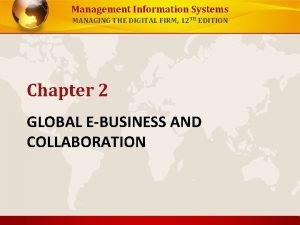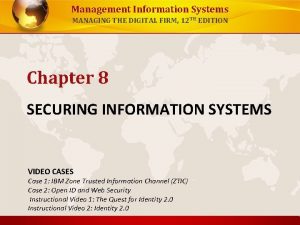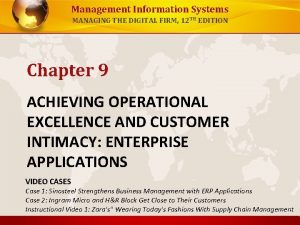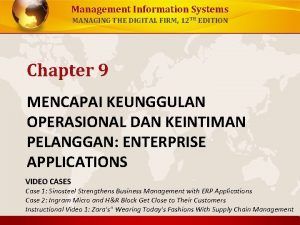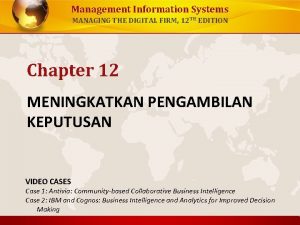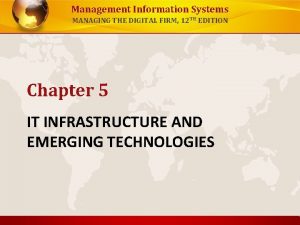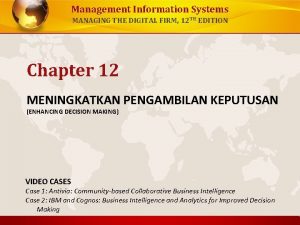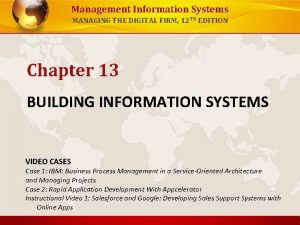Management Information Systems MANAGING THE DIGITAL FIRM 12















- Slides: 15

Management Information Systems MANAGING THE DIGITAL FIRM, 12 TH EDITION Chapter 13 BUILDING INFORMATION SYSTEMS VIDEO CASES Case 1: IBM: Business Process Management in a Service-Oriented Architecture and Managing Projects Case 2: Rapid Application Development With Appcelerator Instructional Video 1: Salesforce and Google: Developing Sales Support Systems with Online Apps

Management Information Systems CHAPTER 13: BUILDING INFORMATION SYSTEMS Alternative Systems Building Approaches • Traditional systems lifecycle: – Oldest method for building information systems – Phased approach divides development into formal stages • Follows “waterfall” approach: Tasks in one stage finish before another stage begins – Maintains formal division of labor between end users and information systems specialists – Emphasizes formal specifications and paperwork – Still used for building large complex systems – Can be costly, time-consuming, and inflexible 2 © Prentice Hall 2011

Management Information Systems CHAPTER 13: BUILDING INFORMATION SYSTEMS Alternative Systems Building Approaches • Prototyping – Building experimental system rapidly and inexpensively for end users to evaluate – Prototype: Working but preliminary version of information system • Approved prototype serves as template for final system – Steps in prototyping 1. 2. 3. 4. 3 Identify user requirements Develop initial prototype Use prototype Revise and enhance prototype © Prentice Hall 2011

Management Information Systems CHAPTER 13: BUILDING INFORMATION SYSTEMS Alternative Systems Building Approaches THE PROTOTYPING PROCESS The process of developing a prototype can be broken down into four steps. Because a prototype can be developed quickly and inexpensively, systems builders can go through several iterations, repeating steps 3 and 4, to refine and enhance the prototype before arriving at the final operational one. FIGURE 13 -9 4 © Prentice Hall 2011

Management Information Systems CHAPTER 13: BUILDING INFORMATION SYSTEMS Alternative Systems Building Approaches • Advantages of prototyping – Useful if some uncertainty in requirements or design solutions – Often used for end-user interface design – More likely to fulfill end-user requirements • Disadvantages – May gloss over essential steps – May not accommodate large quantities of data or large number of users • May not undergo full testing or documentation 5 © Prentice Hall 2011

Management Information Systems CHAPTER 13: BUILDING INFORMATION SYSTEMS Alternative Systems Building Approaches • End-user development: – Uses fourth-generation languages to allow end-users to develop systems with little or no help from technical specialists – Fourth generation languages: Less procedural than conventional programming languages • • 6 PC software tools Query languages Report generators Graphics languages Application generators Application software packages Very high-level programming languages © Prentice Hall 2011

Management Information Systems CHAPTER 13: BUILDING INFORMATION SYSTEMS Alternative Systems Building Approaches • End-user development (cont. ): – Advantages: • More rapid completion of projects • High-level of user involvement and satisfaction – Disadvantages: • Not designed for processing-intensive applications • Inadequate management and control, testing, documentation • Loss of control over data – Managing end-user development • Require cost-justification of end-user system projects • Establish hardware, software, and quality standards 7 © Prentice Hall 2011

Management Information Systems CHAPTER 13: BUILDING INFORMATION SYSTEMS Alternative Systems Building Approaches • Application software packages – Save time and money – Many offer customization features: • Software can be modified to meet unique requirements without destroying integrity of package software – Evaluation criteria for systems analysis include: • Functions provided by the package, flexibility, user friendliness, hardware and software resources, database requirements, installation and maintenance efforts, documentation, vendor quality, and cost – Request for Proposal (RFP) • Detailed list of questions submitted to packaged-software vendors • Used to evaluate alternative software packages 8 © Prentice Hall 2011

Management Information Systems CHAPTER 13: BUILDING INFORMATION SYSTEMS Alternative Systems Building Approaches • Outsourcing – Several types • Cloud and Saa. S providers – Subscribing companies use software and computer hardware provided by vendors • External vendors – Hired to design, create software – Domestic outsourcing » Driven by firms need for additional skills, resources, assets – Offshore outsourcing » Driven by cost-savings 9 © Prentice Hall 2011

Management Information Systems CHAPTER 13: BUILDING INFORMATION SYSTEMS Alternative Systems Building Approaches • Outsourcing (cont. ) – Advantages • Allows organization flexibility in IT needs – Disadvantages • Hidden costs, e. g. – Identifying and selecting vendor – Transitioning to vendor • Opening up proprietary business processes to third party 10 © Prentice Hall 2011

Management Information Systems CHAPTER 13: BUILDING INFORMATION SYSTEMS Alternative Systems Building Approaches TOTAL COST OF OFFSHORE OUTSOURCING FIGURE 13 -10 11 If a firm spends $10 million on offshore outsourcing contracts, that company will actually spend 15. 2 percent in extra costs even under the best-case scenario. In the worst-case scenario, where there is a dramatic drop in productivity along with exceptionally high transition and layoff costs, a firm can expect to pay up to 57 percent in extra costs on top of the $10 million outlay for an offshore contract. © Prentice Hall 2011

Management Information Systems CHAPTER 13: BUILDING INFORMATION SYSTEMS Application Development for the Digital Firm • Rapid application development (RAD) – Process of creating workable systems in a very short period of time – Utilizes techniques such as: • Visual programming and other tools for building graphical user interfaces • Iterative prototyping of key system elements • Automation of program code generation • Close teamwork among end users and information systems specialists 12 © Prentice Hall 2011

Management Information Systems CHAPTER 13: BUILDING INFORMATION SYSTEMS Application Development for the Digital Firm • Joint application design (JAD) – Used to accelerate generation of information requirements and to develop initial systems design – Brings end users and information systems specialists together in interactive session to discuss system’s design – Can significantly speed up design phase and involve users at intense level 13 © Prentice Hall 2011

Management Information Systems CHAPTER 13: BUILDING INFORMATION SYSTEMS Application Development for the Digital Firm • Agile development – Focuses on rapid delivery of working software by breaking large project into several small sub-projects – Subprojects • Treated as separate, complete projects • Completed in short periods of time using iteration and continuous feedback – Emphasizes face-to-face communication over written documents, allowing collaboration and faster decision making 14 © Prentice Hall 2011

Management Information Systems CHAPTER 13: BUILDING INFORMATION SYSTEMS All rights reserved. No part of this publication may be reproduced, stored in a retrieval system, or transmitted, in any form or by any means, electronic, mechanical, photocopying, recording, or otherwise, without the prior written permission of the publisher. Printed in the United States of America. Copyright © 2011 Pearson Education, Inc. Publishing as Prentice Hall 15 © Prentice Hall 2011
 Management information systems managing the digital firm
Management information systems managing the digital firm Management information system managing the digital firm
Management information system managing the digital firm Managing the digital firm
Managing the digital firm Managing knowledge in the digital firm
Managing knowledge in the digital firm Securing information systems summary
Securing information systems summary Managing and using information systems
Managing and using information systems Social and ethical issues in information systems
Social and ethical issues in information systems Example of resource based view
Example of resource based view Managing digital marketing
Managing digital marketing Managing digital communications
Managing digital communications Managing in a digital world
Managing in a digital world Managing in a digital world
Managing in a digital world Managing finance in a digital world
Managing finance in a digital world Faa eim
Faa eim Managing global systems chapter 15
Managing global systems chapter 15 Managing global systems
Managing global systems
